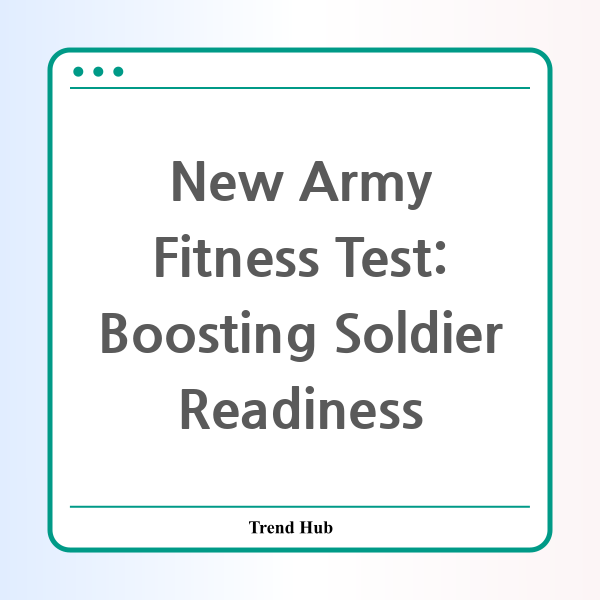* This website participates in the Amazon Affiliate Program and earns from qualifying purchases.

Is the U.S. Army ready to up its fitness game? With the introduction of the Army Fitness Test (AFT), the military is making significant changes aimed at enhancing Soldier performance and combat readiness. This new standard is set to replace the Army Combat Fitness Test (ACFT) and comes as a response to the evolving demands of modern warfare and the necessity for a physically fit fighting force.
The AFT is designed to improve the readiness and lethality of U.S. Army Soldiers by incorporating a more streamlined approach to physical fitness. The test now features five key events: the three-repetition maximum deadlift, hand-release push-up, the sprint-drag-carry, plank, and the traditional two-mile run. This strategic design aims not only to enhance individual Soldier fitness but also to build a more robust and agile Army capable of meeting operational demands.
Key Features of the Army Fitness Test
- Phased Implementation: Scheduled to begin on June 1, 2025, the rollout of the AFT will be gradual, allowing for adjustments and refinements based on feedback and data analysis.
- Combat Heritage: The new AFT will maintain a focus on combat readiness by setting minimum performance standards that are both challenging and achievable for Soldiers in combat military occupational specialties (MOSs).
- Sex-Neutral Standards: The AFT introduces a sex-neutral combat standard, ensuring that all Soldiers must score at least 60 points in each event and a minimum overall score of 350, highlighting the Army's commitment to equal opportunity.
The decision to eliminate certain events, such as the controversial Standing Power Throw, reflects a desire to focus more on functional strength and endurance rather than techniques that may disproportionately favor certain physiques. This move was welcomed by many in the ranks who viewed the previous events as insufficient indicators of a Soldier's combat capability.
Understanding the Scoring System
The scoring system has been updated to align better with the performance expectations. For Soldiers in combat roles, achieving a minimum score of 350 is essential, while those in non-combat roles have a slightly lower threshold of 300 points. The revised AFT looks to encourage all Soldiers to attain a higher level of fitness, thus enhancing overall Army readiness.
Here’s a quick comparison of the scoring standards:
| Category | Minimum Points per Event | Overall Minimum Score |
|---|---|---|
| Combat Roles | 60 | 350 |
| Non-Combat Roles | 60 | 300 |
Adaptation and Future Considerations
Beyond the immediate implementation, the Army is taking significant steps to align fitness policies with the new test. This includes addressing the needs of Soldiers with medical profiles and creating governance structures to assess the impacts of the AFT on overall readiness, retention rates, and overall Army strength. The impact of these changes aims to ensure that the U.S. Army remains agile, fit, and prepared to engage effectively in various operational environments.
In conclusion, the Army's transition to the AFT signifies a pivotal moment for Soldier fitness standards. By prioritizing equality and functional performance, the Army is setting a benchmark for physical readiness that will resonate throughout the ranks. This initiative is not merely about passing a test; it's about forging a more competent and resilient fighting force prepared for the challenges of the modern battlefield.
* This website participates in the Amazon Affiliate Program and earns from qualifying purchases.